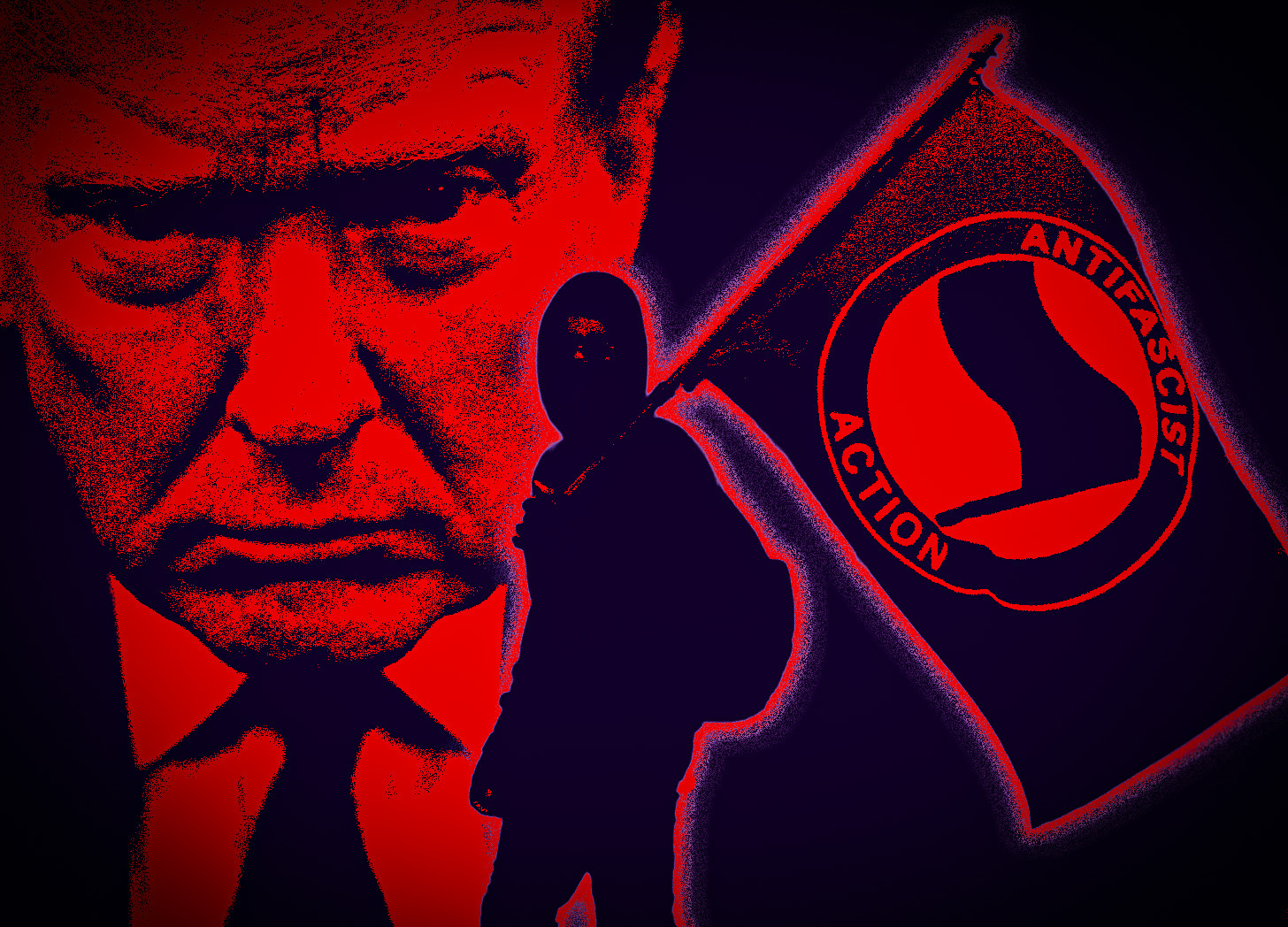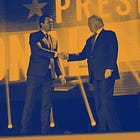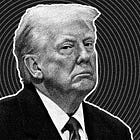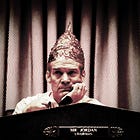Trump's New Directive Could Treat All Those Who Oppose Him as Terrorists
NSPM-7's scope is so broad and vague it would allow the president to target anyone who speaks out against him or MAGA as a national security threat
Donald Trump and his political faction rushed to exploit Charlie Kirk’s killing as a pretext to suppress criticism of the administration and of the right in general. Such criticism was painted as incitement to violence and as direct support for left-wing “terrorism,” which was falsely described as being on the rise and more common than right-wing political violence.
This campaign for reprisals against political opponents temporarily foundered when FCC head Brendan Carr’s threats against Jimmy Kimmel’s show proved too open and reminiscent of a mob boss. Yet this is one of the big projects of Trump’s second term, which he is now pursuing through a larger, more sweeping, effort: a presidential national security directive called “NSPM-7” that lays the groundwork for a regime of full-blown ideological censorship, designating as “terrorists” the advocates of commonplace views protected by the First Amendment.
The Charlie Kirk Pretext
The administration’s crackdown on criticism of Charlie Kirk was its big trial balloon to see how far it could get in characterizing opposing views as incitement to political violence. While its attempt to keep Kimmel off the air—not even for criticizing Kirk directly, but for accusing the “MAGA gang” of trying to “score political points” off his death, which was undoubtedly true—was unsuccessful, other targets proved more vulnerable.
Multiple college professors—as many as 40, according to the American Association of University Professors—were fired or suspended, in one case merely for reposting some of Kirk’s more controversial and bigoted statements. Only a few have since been reinstated. The State Department has revoked the visas of foreign visitors for ideological infractions as mild as saying that Kirk “won’t be remembered as a hero.” In an area like visas, where the administration’s power is broadest and most ripe for abuse, it has been successfully deployed to suppress speech.
But note that Trump rather quickly forgot about Charlie Kirk as his pretext for this clampdown. Within days, he moved on to the idea that criticism of him—Trump—is inherently illegal. On Air Force One, he complained about television news programs: “They give me only bad publicity, press. I mean, they’re getting a license. I would think maybe their license should be taken away.” He reiterated this shortly afterward in the Oval Office: “When 97% of the stories are bad about a person, it’s no longer free speech.”
The “Antifa” Bogeyman
Trump has been seeking to codify this clampdown on speech, taking it beyond a series of ad hoc presidential complaints and turning it into a universal policy. The next step was to declare a witch hunt against “antifa,” designating the left-wing self-described “antifascist” movement as a domestic terrorist organization.
Yet there really is no such organized movement. Historically, “antifa” was an abbreviation for Antifaschistische Aktion, the street-brawling wing of the Communist Party of Germany in the 1920s and early ’30s. As the Stalinist faction of German Communism, this party was rigidly organized from the top down. But that was 100 years ago. The modern incarnation of antifa, despite borrowing the same flag, is deliberately not centrally organized. It is a brand rather than an organization, with loosely affiliated adherents and no national leaders.
Nor, for that matter, is there any actual legal category in the U.S. for domestic terrorist organizations. But the vagueness of this terrorism designation is the whole point. If “antifa” has no organizational structure as a movement, then anyone can be declared to be antifa and thus targeted as a terrorist. For example, administration officials began a steady drumbeat referring to the “No Kings” protests as “part of antifa,” when these conspicuously nonviolent protesters are obviously just a bunch of normies, dressed not in the paramilitary garb of “black bloc” protesters, but in inflatable frog costumes.
Obviously it is possible to be opposed to fascism without being connected to a very specific leftist movement with roots in Stalinism. In fact, the defeat of fascism historically was achieved, not by Antifaschistische Aktion, which was crushed, but by ordinary Americans who fought World War II and then prosecuted Nazi war criminals. In other words, the kind of people who flocked to the No Kings rallies.
But don’t bother to examine a folly, ask only what it accomplishes. Trump needs to pretend that his opponents are violent anarchists in order to justify the use of state force to suppress them.
Is Everyone a Terrorist?
All of this is now being codified in a presidential directive known in the White House by the somewhat pretentious acronym NSPM-7, because it is Trump’s seventh “National Security Presidential Memorandum.” It was issued somewhat quietly but brought to wider attention by independent investigative reporter Ken Klippenstein, who points out that this is something more than just an executive order: “a national security directive is a sweeping policy decree for the defense, foreign policy, intelligence, and law enforcement apparatus.”
This vast array of national security agencies is to be brought to bear on “left-wing terrorism”—which is then defined to include a broad collection of ordinary, even mainstream political viewpoints. Here is the crucial passage from the memorandum:
There are common recurrent motivations and indicia uniting this pattern of violent and terroristic activities under the umbrella of self-described “anti-fascism.”… Common threads animating this violent conduct include anti-Americanism, anti-capitalism, and anti-Christianity; support for the overthrow of the United States Government; extremism on migration, race, and gender; and hostility towards those who hold traditional American views on family, religion, and morality. As described in the Order of September 22, 2025 (Designating Antifa as a Domestic Terrorist Organization), the groups and entities that perpetuate this extremism have created a movement that embraces and elevates violence to achieve policy outcomes, including justifying additional assassinations.
The “indicia” that supposedly indicate terrorist tendencies fall into three categories.
Only one of the items on the list describes an actual violent agenda: “support for the overthrow of the United States Government.”
The second category is a series of vague descriptions that could cover almost anything, such as “anti-Americanism” and especially “extremism on migration, race, and gender.” “Extremism” is a rubber term that can mean anything and everything, depending on who wants to define it. In practice, it tends to mean: any position that is opposed to one’s own.
Does it just mean being outside the mainstream in one’s goals and policies? And what, for example, would “extremism on race” consist of? An “extreme” belief in racial equality? Or does “extremism” mean advocating radical measures in achieving those goals? And is it possible that such radical measures could include, for example, civil disobedience rather than violence?
Of course, if we are supposed to be on the lookout for “extremism on migration,” the Trump administration is the leading example, both in its goal—hostility toward all immigrants—and in its methods: the use of indiscriminate violence against citizens and non-citizens alike. The same might be said for “extremism on race,” which would certainly apply to Republican group chats that use racial slurs and proclaim a love for Adolf Hitler. As for “anti-capitalism,” this is a distinguishing feature of the new nationalist right, and centralized command and control of the economy been broadly implemented in Trump’s second term. Perhaps the most glaring item on the list is “support for the overthrow of the United States government,” which describes the attack on the U.S. capitol on Jan. 6.
But that’s the point of expressing all of this in vague and undefined terminology. It creates a category so flexible that it can include any of the administration’s enemies—but never the administration itself or its friends.
That goal is revealed by the final category, which lists, as dangerous “indicia” of terrorism, ideas that are not merely protected by the First Amendment but are arguably mainstream. Most prominently, this includes “hostility towards those who hold traditional American views on family, religion, and morality.” For many decades “traditional American views on family, religion, and morality”—at least, as those traditions are defined by the religious right—have been on the decline. A traditional view on family, for example, would be opposition to gay marriage—which has been the law of the land for a decade now and is widely accepted. And if you look at the non-traditional structure of Donald Trump’s own family—kids from multiple marriages and a long history of flagrant infidelity—even he wouldn’t measure up.
A Pew survey a few years ago found the number of Americans who identify as Christians has declined from 90% in the 1990s to 64% today. Those who list their religious beliefs as “nothing in particular”—a mix of atheists, agnostics, and the merely uncommitted—are about 30% of the population. Combine this with liberal Catholics (such as the first American pope) and moderate mainline Protestants, and it is almost certain that what the Trump administration regards as “traditional American views on religion” are held only by a minority in this country.
That’s the central goal of NSPM-7: to establish special privileges for a conservative ideological minority, whose views are to be protected from certain forms of criticism or opposition, with such criticism in some cases treated as literal terrorism.
Thoughtcrime
The most worrisome aspect of these “indicia” of supposed left-wing terrorism is that they are descriptions of ideas. And these ideas are to be suppressed, not at the point where someone attempts to use them as a justification for an imminent threat of violence, but “before they result in violent political acts,” as the directive states (emphasis mine). To accomplish this, the administration intends to implement “a national strategy to investigate and disrupt networks, entities, and organizations.”
This is the groundwork for a regime of ideological censorship with the goal of suppressing organized opposition to and protest against this administration—and enshrining the views of a shrinking minority of Trump’s hardcore supporters as dogma that is officially shielded from criticism. It is also a project of authoritarian consolidation, punishing those who question government propaganda.
The Trump administration is almost certainly wrong about how easy it will be to suppress these ideas. They imagine that large, loosely organized movements, like the recent No Kings protests, are somehow centrally directed by a shadowy figure like George Soros, who supposedly pays all the protesters. They imagine there is a giant switch somewhere in the office of an NGO, and if they want to consolidate power, all they have to do is flip it and cut off the energy to their political opponents. And then they will wonder why it doesn’t work. But in the process, they are laying the groundwork to do a lot of damage to the American principle of freedom of speech and to the vibrant debate and dissent that characterizes a free society.
If we ever get to the point of re-opening the government, Democrats should add to their list of demands that Trump rescind NSPM-7 and abandon this campaign against political freedom in America.
© The UnPopulist, 2025
Follow us on Bluesky, Threads, YouTube, TikTok, Facebook, Instagram, and X.
We welcome your reactions and replies. Please adhere to our comments policy.








Thanks for the explainer, Robert, I had not seen any of the text of the memorandum or really understood how memoranda operate among all the executive decrees of the regime. It is disturbing but also right on brand and is not unexpected.
At some point, hopefully, the machinery of enforcement will breakdown because there aren't enough agents to enforce the laws and courts to adjudicate them along with all the other law enforcement commitments the administration has made.
Orban is having a hard time stopping thought crimes in a little 2nd tier country like Hungary. Putin is great at chopping of the heads of any resistance but who knows what is really happening among the masses of Russians. We also fell for the myth that the Soviet Union was strong until it collapsed like a house of cards. I find it hard to believe that Russia hasn't crushed Ukraine by now if it actually had the capacity to do so. Hungary and Russia are cultures that have been habituated to authoritarian governments.
This is not how the US functions culturally with 50 states and 300 million people used to doing whatever they want with little government interference. Trump and his 21st Century Christian Nationalists may have some success in the short term but the long term prognosis may not be so good.
Reactionaries talk about "traditional views" as something quasi-sacred, a manifestation of "the laws of God and nature," by contrast with "ideology," which they hold to be a fabricated worldview that is fundamentally destructive. They believe that their own presuppositions and religious doctrines are not ideology at all, but simply "truth" and "tradition," not needing a rational defense, but requiring vigorous protection from any challenge. Trump's directive veers close to the territory of "heretics must be eliminated because they have rebelled against God."